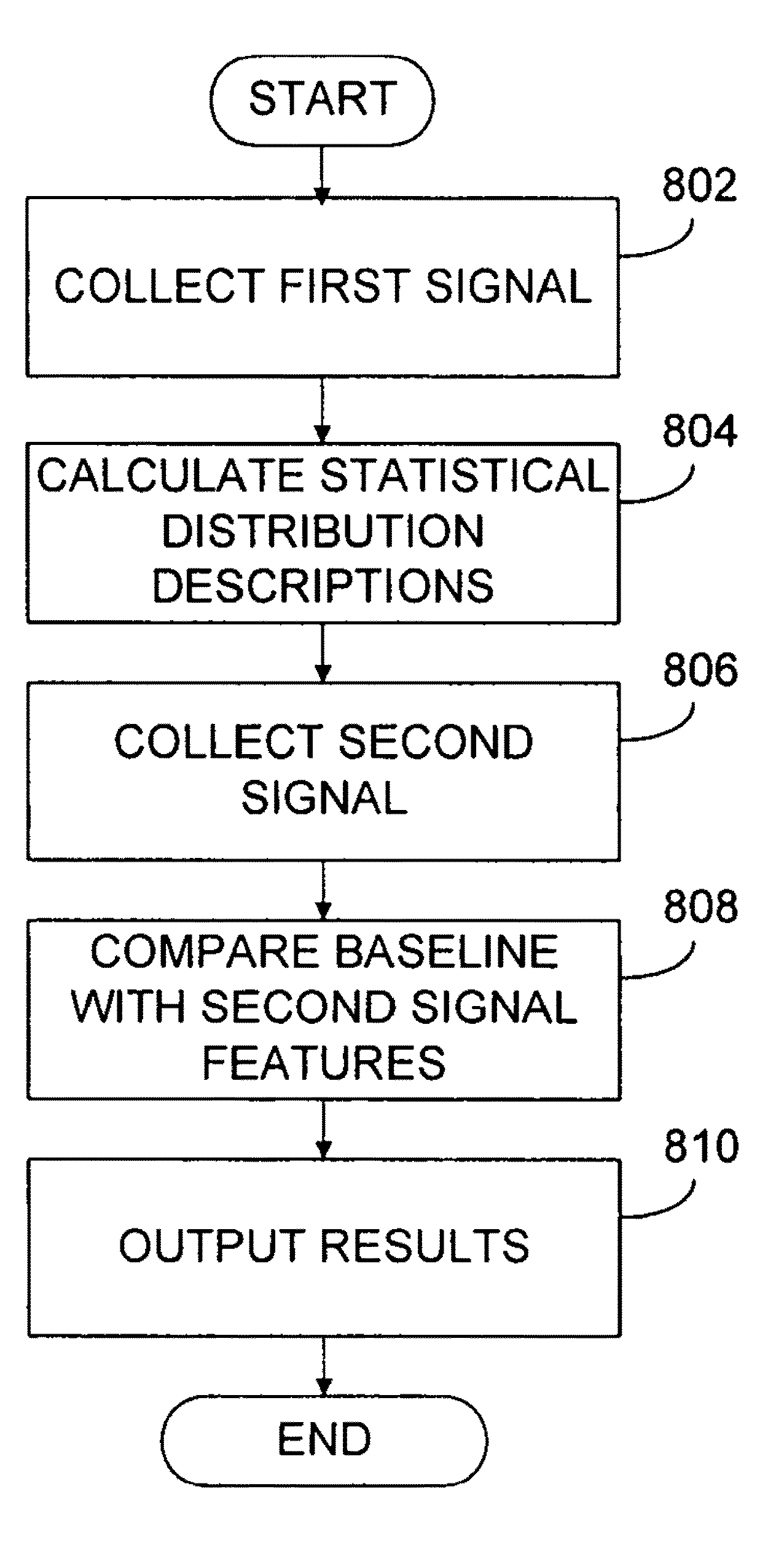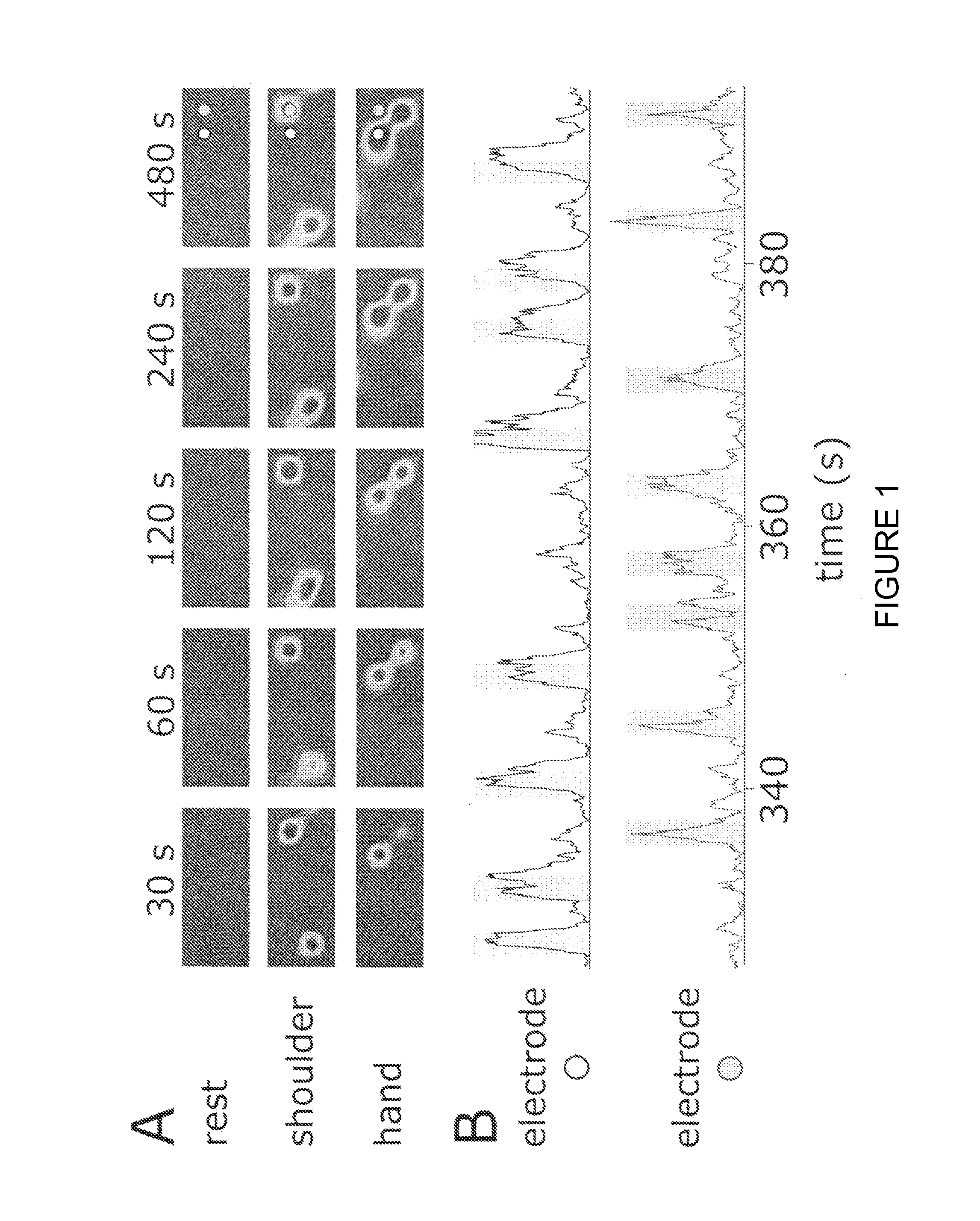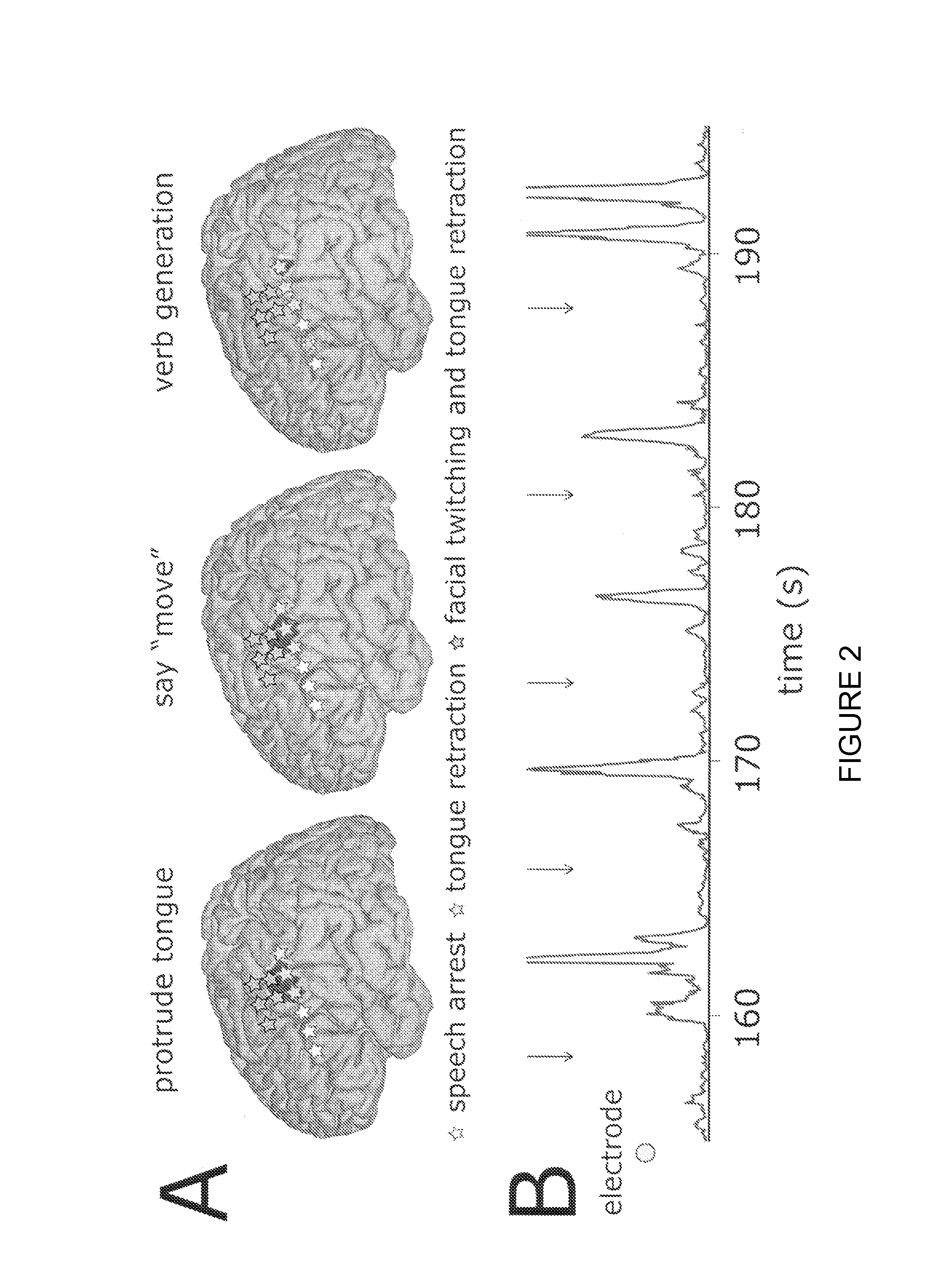Method for analyzing function of the brain and other complex systems
a brain and complex system technology, applied in the field of detection of signal changes in complex systems, can solve the problems of affecting the clinical and research progress of patients,
- Summary
- Abstract
- Description
- Claims
- Application Information
AI Technical Summary
Benefits of technology
Problems solved by technology
Method used
Image
Examples
example 1
Signal Modeling for Real-Time Identification and Event Detection in Epilepsy Patients
[0062]Electrocorticography (ECoG) activity was recorded in several patients with intractable epilepsy. ECoG is a technique of recording the electrical activity of the cerebral cortex by means of electrodes placed directly on it, either under the dura mater (subdural) or over the dura mater (epidural) but beneath the skull. Collection of ECoG signal activity can be conducted in accordance with the methods of US App. Pub. No. 2005-0131311, incorporated herein by reference. First, ECoG signals were recorded from 32 channels while the subject rested. Subsequently, signals were recorded from the same channels while the subject rested or moved her shoulder or hand in response to visual cues. Also, signals were recorded from the same channels while the patient protruded the tongue and said the word “move” in response to visual cues. In addition, signals were recorded from the same channels while the patien...
example 2
Signal Modeling for Real-Time Identification and Event Detection in Normal Patients Performing Tasks
[0075]In several normal individuals, EEG activity was recorded from 64 scalp locations of subjects during rest. Patients were then asked to perform a number of motor and / or motor imagery tasks and EEG activity was again recorded.
[0076]Data thus collected was processed by a methodology termed Signal Modeling for Real-Time Identification and Event Detection (SIGFRIED), as described in Example 1. SIGFRIED was trained on a 1-min baseline period that was recorded prior to the movement / imagery tasks. Relevant EEG frequencies (i.e., 10-30 Hz in 2-Hz bins) were used in the calculations.
[0077]Results showed that EEG activity at distinct and reproducible locations on the scalp corresponded to specific actual or imagery tasks (see, e.g., FIG. 3). From FIG. 3, different locations that show changes with the different tasks are evident. For example, FIG. 3 depicts differences between actual movemen...
example 3
Seizure Prediction
[0079]Several subjects with intractable epilepsy were monitored using subdural electrodes over a broad range of frequencies (i.e., 5-90 Hz in 5-Hz bins). Data thus collected were processed by a methodology termed Signal Modeling for Real-Time Identification and Event Detection (SIGFRIED), as described in Example 1. SIGFRIED was previously trained on a different dataset using the same range of frequencies (i.e., 5-90 Hz in 5-Hz bins).
[0080]Results showed that seizures were readily detectable and, furthermore, predictable (see, e.g., FIG. 4). For example, from FIG. 4, seizures are detectable around times 3500 and 3000. In addition, several locations show abnormal activity prior to the seizure, thus providing the ability to predict the impending seizure. Because the detection threshold was the same and SIGFRIED was trained on a different dataset using the same broad range of frequencies (i.e., 5-90 Hz in 5-Hz bins), similar results can be expected in other subjects.
PUM
 Login to View More
Login to View More Abstract
Description
Claims
Application Information
 Login to View More
Login to View More - R&D
- Intellectual Property
- Life Sciences
- Materials
- Tech Scout
- Unparalleled Data Quality
- Higher Quality Content
- 60% Fewer Hallucinations
Browse by: Latest US Patents, China's latest patents, Technical Efficacy Thesaurus, Application Domain, Technology Topic, Popular Technical Reports.
© 2025 PatSnap. All rights reserved.Legal|Privacy policy|Modern Slavery Act Transparency Statement|Sitemap|About US| Contact US: help@patsnap.com



